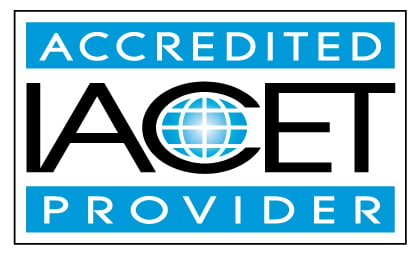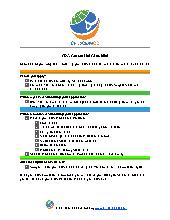CDA Bridge Bundle: Family Child Care without Portfolio Review
The 30-Hour Bridge Bundle for Maryland Child Care Providers is a targeted training program to help Maryland child care professionals with a 90-hour certification complete the remaining training hours needed to qualify for the Child Development Associate (CDA) Credential. This credential is widely recognized in early childhood education and can enhance your career and earning potential.
Benefits of the 30-Hour Bridge Bundle
-
Who It's For: Maryland child care providers who have completed the 90-hour certification, including the 45-hour Growth and Development and 45-hour Curriculum trainings.
- Purpose: This program provides the final 30 hours of training needed to meet the CDA Credential requirements, which can advance your career and increase your earning potential.
- What You'll Learn:
- Child Development: Gain deeper insights into developmental milestones for young children.
- Effective Teaching: Learn to design activities that support social, emotional, cognitive, and physical growth.
- Inclusion: Explore ways to support children with special needs.
- Professionalism: Develop a professional approach to child care that elevates the quality of care.
- Flexible Online Format: Complete the program at your own pace with an online setup, making it easy to balance with work and life commitments.
- Instructor Support: Get guidance and support from experienced instructors, helping you understand and apply what you learn.
- Helpful Resources: Access over 100 handouts and resources that reinforce the training content and help you excel in your role.
- Career Growth: Earning your CDA Credential opens doors to new opportunities and shows your dedication to providing high-quality care and education to young children.
By the end of this training, the learner will be able to:
- Define differentiated instruction in early childhood education and describe how it may look in the classroom.
- Identify and contemplate bias and explore anti-bias approaches that support working with children and families.
- Demonstrate an understanding of translating assessment and observational information into short and long term goal development
- Explain typical and atypical development.
- Identify the differences between developmental screening and assessments.
- Recognize the importance of the use of developmental screenings.
- Demonstrate understanding of inclusionary practices for anxiety in the child care setting.
- Define and identify common signs and behaviors of children and youth with fetal alcohol syndrome.
- Describe the components of the ASQ.
- Give examples of what educators can submit as samples for children’s portfolios.
- Define Adverse Childhood Experiences and identify its effects on child development
- Demonstrate understanding of using assessment and observations for short and long term goal development for ages birth to three.
- Recognize the importance of knowing the stages of development.
- Recognize the differences between major theories.
- Explain how theory is reflective in the child care environment.
- Identify theorists of guidance and discipline
- Define and identify common signs and behaviors of children and youth with depression.
- Demonstrate understanding of inclusionary practices for depression in the childcare setting.
- Define and identify common signs and behaviors of children and youth with developmental disabilities.
- Define and identify common signs and behaviors of children and youth with ADHD.
- List community resources, supports, and referrals for ADHD.
- Demonstrate understanding of inclusionary practices for ADHD in the child care setting.
- Demonstrate understanding of inclusionary practices for cerebral palsy in the child care setting.
- Demonstrate understanding of inclusionary practices for developmental disabilities in the childcare setting.
- List community resources, support, and referrals for developmental disabilities.
- List community resources, supports, and referrals for cerebral palsy.
- Demonstrate understanding of inclusionary practices for autism spectrum disorder in the child care setting.
- Demonstrate how theory is reflective in the child care environment for infants and toddlers.
- Define and identify common signs and behaviors of children and youth with conduct disorder.
- List community resources, supports, and referrals for conduct disorder.
- Define resilience and identify ways it helps young children overcome toxic stressors.
- List community resources, supports, and referrals for fetal alcohol syndrome.
- Demonstrate understanding of inclusionary practices for fetal alcohol syndrome in the childcare setting.
- Describe the stages of emotional development in young children.
- Demonstrate an understanding of how to implement an Individual Education Plan.
- Describe ways to analyze classrooms for an anti-bias approach.
- Define the similarities between major theories.
- Identify effective strategies for interviewing potential new staff.
- Identify the components of a lesson plan for the family child care setting
- Define the Cycle of Inquiry and how it can be used to plan emergent curriculum.
- Define and identify common signs and behaviors of children and youth with Autism Spectrum Disorder.
- List community resources, supports, and referrals for autism spectrum disorder.
- Define and identify common signs and behaviors of children and youth with anxiety.
- Define and identify common signs and behaviors of children and youth with cerebral palsy.
- Demonstrate an understanding of emergent curriculum.
- Recognize the needs of individualized learning for infants and toddlers.
- List community resources, supports, and referrals for depression.
- Describe the stages of grief and the different ways children react to grief and stress.
- Identify characteristics of project based learning in the classroom environment and curriculum
- Identify assessment tools.
- List strategies to collaborate with specialists to administer developmental screenings.
- List community resources, supports, and referrals for anxiety.
- Give examples of tools that record and communicate critical information to other staff and families.
- Identify strategies for working with children with special needs.
- Identify the different types of portfolios used in child care programs, and the appropriate portfolio components for each type.
- Recognize the importance of problem solving and conflict resolution strategies with community members and families
- Identify communication issues that are common in the early care and education environment
- Describe Piaget’s sensorimotor and preoperational stages of cognitive development.
- Criteria to earn CEUs:
- Certificates are awarded when the following criteria have been met by the learner:
- Class has been paid in full
- All material has been reviewed
- All review questions and final test have been completed with a passing score of 80% or higher.
- Learning Assessment Method:
- Learners will be assessed through questions after every section is completed. Learners will not be
allowed to proceed to the next section of the training until all questions have been answered correctly.
Learners will be presented with a final test composed of true/false and multiple choice questions.
Upon successful completion of the training, learners will receive their certificate by email.
- Learning Methodology:
- Online material will be presented in the form of slides,
accompanied with speech. Videos will be used to demonstrate ideas and concepts. Charts and tables
will be used for illustration.
- Logistics/Required Technology:
- A stable internet connection is required for the completion of this course. Users are highly encouraged to take their online course on Google Chrome on either a laptop or desktop computer. Speakers and/or headphones are also required to hear speech.
- Payment Policy:
- Payments need to be made in full. No refunds will be issued after starting the class.
- Proprietary or conflict of interest disclosure:
- Unless otherwise stated in the course description none of H & H subject matter experts and editor has any conflict or proprietary interests related to the material they prepared in this course.
- Support Services:
- Please visit our contact us page
You are purchasing a session of an online training that includes online assessments. Your certificate will be emailed to you once you pass the final exam with a passing grade of 80%.
Your certificate will bear the name you provided to us when you signed up. For support and questions regarding the material presented in this class please contact us at info@childcareed.com. Please consult our frequently asked questions page for other questions or feel free to contact us.
No prerequisites are required for the completion of this course.
Hours breakdown
10.5 CD/13.5 SN/3 PRO/3 CURTopics / Categories
Group AdminFamily Child Care Providers
Families
Professionalism
Child Development
Not Applicable
Basic
Curriculum and Environment
Professionalism
Child development
CDA
Observation and Assessment
Special Needs


